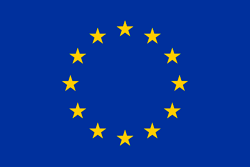“The tool is currently available for 7 city-hubs: Logroño, Milan, Athens, Cork, Lillestrøm, Gdynia and Amsterdam”
TECNALIA develops a tool to view the frequency and severity of extreme heat events at different regional scales
TECNALIA's Adaptation to Climate Change team has developed a tool as part of the European REACHOUT initiative. This tool provides interactive panels and maps that make it possible to view the frequency and severity of past and future extreme heat events at different regional scales - municipalities, provinces and/or autonomous communities.
It takes historical e-OBS data into account, along with independent, reliable EURO-CORDEX climate projections from the Copernicus C3S Climate Change Service.
The tool is currently available for 7 city-hubs: Logroño (Spain), Milan (Italy), Athens (Greece), Cork (Ireland), Lillestrøm (Norway), Gdynia (Poland) and Amsterdam (Netherlands).
TECNALIA has held several co-creation workshops with these hubs to identify the needs of these cities and to define the tool's functions; high-resolution maps showing the average surface temperature of cities will be added so that the areas with the highest heat concentration can be seen more clearly, which will also make it possible to plan future interventions in cities.
Adaptation strategies and measures
The trend in the cities and regions that are most affected by the overwhelming impact of global warming is undoubtedly to identify adaptation strategies to reduce or at least mitigate the impacts.
Knowing this information is crucial when it comes to improving the adaptive capacity of regions and cities: it helps the various stakeholders design adaptation plans and regional policies that are commensurate with their future risks.
Risk Level
The alert, prevention and control plans for the effects of excess temperature on health assign different risk levels based on the number of consecutive days on which the set maximum and minimum temperature thresholds are exceeded.
Following the same approach, the REACHOUT initiative has set three risk levels linked to the 95th and 90th percentiles of maximum and minimum temperatures respectively:
- Yellow level (warning): when there are two consecutive hot days that exceed these percentiles. Certain specific activities may be affected.
- Orange level (alert): when there are three or four consecutive hot days that exceed these percentiles. Damage from the impact can be significant for some sectors.
- Red level (alarm): when there are five or more consecutive hot days that exceed these percentiles. Material damage can be very high.
More intense heat waves
The UK broke its all-time records three times in one day, reaching 40.3 °C and the Netherlands also posted record temperatures for July. In Spain, the heat wave between July 9 to 26 (18 days) was the second longest on record, with 44 provinces affected.
The resulting total death toll for the summer was 4,861 deaths attributable to excess temperature, according to the Mortality Monitoring (MoMo) agency. Furthermore, tens of thousands of hectares caught fire, causing agricultural losses and other impacts, and there was also increased electricity consumption and productivity problems at work and in schools.
Evolution of heat waves
This year, the inhabitants of Seville endured temperatures of more than 40°C for 21 consecutive days. Municipalities such as Logroño could reach these temperatures by the end of this century (2090), according to projections estimated by some climate models.
Under the same conditions, by 2050 Logroño could experience 3 times more warning events, 27 times more alerts and 4 times more alarms than those experienced during the period 1981-2010. This increase will be exponential in the coming decades if we do nothing to stop it, as shown in Graph 1 at the bottom of this article.
The tool also makes it possible to characterise each of the heat waves experienced in the past. It provides data on the start date of the heatwave, the duration, the maximum temperature reached, and the average intensity, taking the maximum temperatures for each day into account. This can be seen in Graph 2.

This tool was developed as part of the REACHOUT project. This project has received funding from the Horizon EU research and innovation program, in accordance with Subsidy Agreement No. 01036599.

